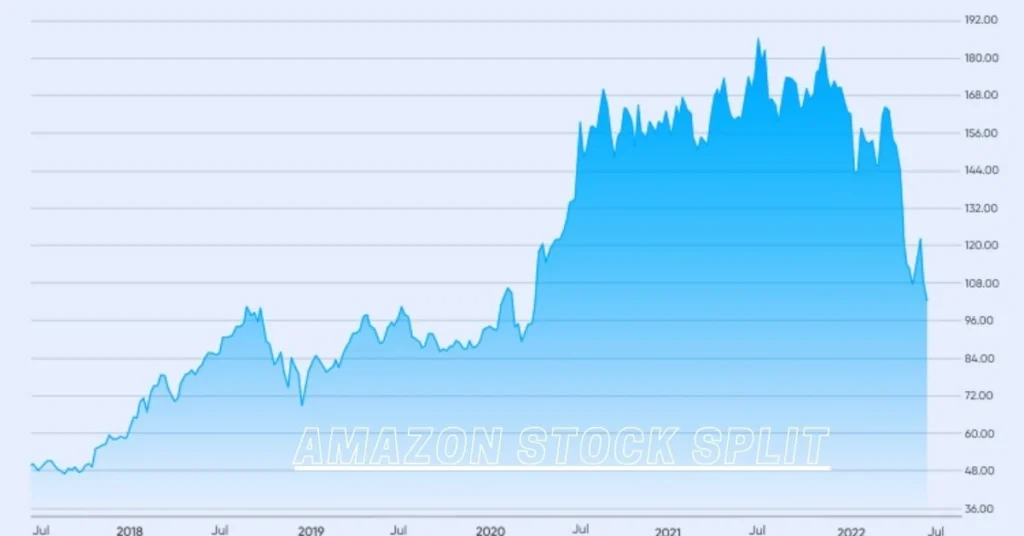Introduction
A stock split is a significant event in the financial world, affecting both companies and investors. Amazon, a leading e-commerce and cloud computing giant, has undergone multiple stock splits throughout its history. This article delves into the details of Amazon stock splits, their implications for shareholders, and the broader impact on the company’s stock performance and market perception.
Understanding Stock Splits
A stock split occurs when a company issues additional shares to shareholders, increasing the total number of shares outstanding while maintaining the overall market value. For instance, in a 2-for-1 split, shareholders receive two shares for every one they own, but the share price is halved. This mechanism is often used to make shares more affordable and increase liquidity.
Historical Overview of Amazon Stock Splits
Amazon has executed several stock splits since its IPO in 1997. These splits were primarily aimed at making its stock more accessible to a broader range of investors. Each split was a strategic move to balance the stock’s price and maintain its attractiveness to both individual and institutional investors.
The First Split: June 1998
Amazon’s first stock split occurred on June 2, 1998, when the company implemented a 2-for-1 split. At the time, Amazon was still in its early stages of growth, and the split aimed to make its shares more affordable for investors as the company expanded its business model beyond books to include a wider range of products.
The Second Split: January 1999
Less than a year later, on January 5, 1999, Amazon executed another 2-for-1 stock split. This second split came during a period of rapid growth and market optimism surrounding technology companies. The split was designed to keep the stock price within a range that was appealing to a larger investor base.
The Third Split: September 1999
Amazon’s third stock split, also a 2-for-1 split, occurred on September 1, 1999. The timing of this split coincided with a period of high investor enthusiasm for tech stocks, and Amazon’s decision to split its shares was a reflection of its continued expansion and increasing market capitalization.
The Impact of Stock Splits on Amazon’s Stock Price
Stock splits themselves do not alter the fundamental value of a company; they merely adjust the number of shares and their price. However, the perception of a stock split can influence investor sentiment and, consequently, the stock’s market performance.
Short-Term Effects
In the short term, stock splits often lead to increased trading activity and higher stock prices. This is partly due to the enhanced liquidity and the psychological impact on investors, who may perceive the lower price as a buying opportunity. For Amazon, each split typically resulted in a boost in stock price, reflecting the market’s positive reaction to the company’s growth and prospects.
Long-Term Trends
Over the long term, the effects of stock splits tend to balance out as the company’s underlying performance and market conditions play a more significant role in determining stock value. Amazon stock splits have been followed by periods of substantial growth, driven by the company’s strategic investments and innovations in e-commerce and cloud computing.
Strategic Reasons Behind Amazon Stock Splits
Amazon stock splits were part of a broader strategy to maintain its stock’s accessibility and appeal. By splitting its shares, Amazon aimed to:
- Enhance Liquidity:
More shares in circulation typically result in higher trading volumes, which can reduce bid-ask spreads and make it easier for investors to buy and sell the stock.
- Attract Retail Investors:
Lower-priced shares can attract individual investors who might be deterred by a high stock price. This can help broaden the investor base and increase demand for the stock.
- Maintain Stock Price Range:
By keeping the stock price within a certain range, Amazon ensured that it remained accessible to a wide range of investors, which is crucial for maintaining a balanced and active market for its shares.
Analysis of Post-Split Performance
To understand the impact of Amazon stock splits, it is essential to analyze the company’s performance following each split.
Post-June 1998 Split
Following the first stock split in June 1998, Amazon experienced a period of significant growth. The company’s expansion into new product categories and its focus on building a robust e-commerce platform contributed to a rise in its stock price. The split helped facilitate increased trading activity and investor interest.
Post-January 1999 Split
The January 1999 split was followed by continued growth, as Amazon expanded its market presence and improved its financial performance. The stock’s post-split performance reflected positive investor sentiment and the company’s ongoing success in capturing market share.
Post-September 1999 Split
The September 1999 split coincided with the height of the dot-com bubble, a period of extreme volatility and rapid growth in technology stocks. Amazon’s stock price surged in the aftermath of this split, driven by heightened investor enthusiasm and speculation about the future of e-commerce.
Comparing Amazon Stock Splits to Industry Trends
Amazon stock splits can be compared to similar events in the technology and retail sectors. Many tech companies, including Microsoft and Apple, have executed stock splits as part of their growth strategies. Comparing these splits provides insight into industry trends and the common strategies employed by successful companies to manage their stock prices and investor relations.
The Role of Stock Splits in Investor Sentiment
Stock splits can influence investor sentiment by creating a perception of increased affordability and accessibility. For Amazon, each split was an opportunity to signal growth and confidence in its business model. The company’s strategic use of stock splits helped maintain investor interest and support its stock price during periods of rapid expansion.
Conclusion
Amazon stock splits have been a key component of its strategy to manage its stock price and investor relations. By implementing multiple splits over the years, Amazon has successfully balanced the affordability and liquidity of its shares while supporting its growth and expansion. The positive effects of these splits on the company’s stock performance reflect the broader market trends and investor sentiment that accompany such events.
As Amazon continues to evolve and expand its business, understanding the historical context of its stock splits provides valuable insights into the company’s approach to managing its stock and engaging with investors. The impact of these splits on Amazon’s stock price and market perception underscores the significance of stock splits as a tool for financial management and investor relations.
Read More: Authentic Montreal-Style Bagels at Spread Bagelry






